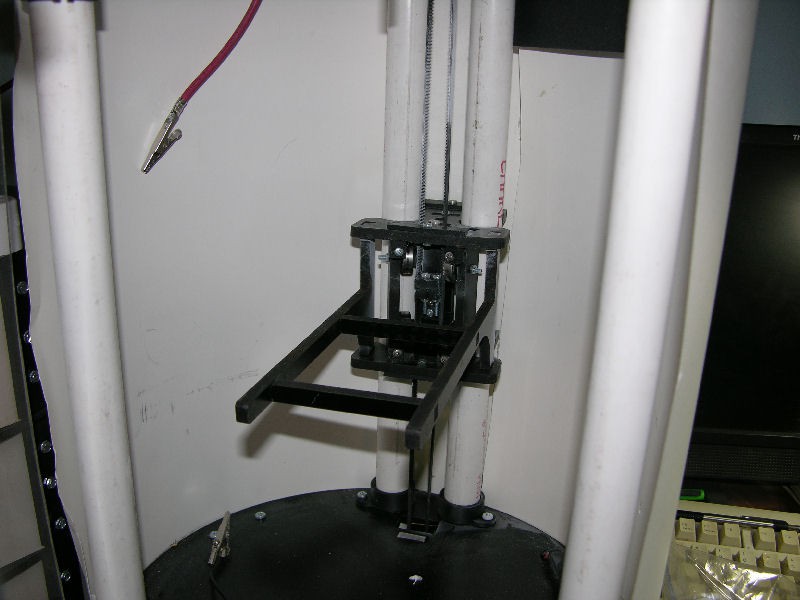The second big change in the machine is the Z axis carriage.
The old one worked fine, and was pretty much a one file 3D print. It didn't need any bearings, and was about as cheap as you can get to make.
But it had one drawback: I was worried about it handling heavier loads. For just a flat metal plate it's fine, but for my next trick I need a spinning drum, and with all that extra weight I was concerned I wouldn't be getting accurate movement.
So this is what I came up with. It lets me keep the PVC columns, which of course keep the metal around the chamber to a minimum. With 32kV in there that's a good thing.
This carriage does use bearings, eight of them. They sit at an angle to each of the two columns, and hold it in place with virtually no wiggle that I can detect. Side to side movement is pretty much nonexistent and movement is smooth. Just what I'm looking for.
It's mostly laser cut parts, so it's fast to make. Putting it together is a bit tricky, but doable.
So how does it handle the extra loads? Very well, thank you. I'm not going to say I won't be making improvements some time in the future, but this is fine for now. I put the rotary on it, and then tossed some extra stuff laying around on top, extra stepper motors and such, and it didn't care.
It looks huge in the chamber, at least compared to the old one, but I'm good with that for now. That's probably the first thing I would work on if and when I revisit it in the future.
Oh, well, okay, I just thought of something else I need to do to it. Those pieces sticking out and carrying the table? Well, one of them warped a bit and the table's leaning a fraction to the left. I think a quick change to those two pieces will stop that from happening. So maybe I better get those changed here shortly...
That's it, the second big change to the machine. It's a big improvement if you want to handle any thing heavier than a metal plate. And I do.
Well, back to work. I need to tweak a few things here and there, take a few pics of the rotary with it's new motor, and then make a few runs to show you what this is all about. I think you'll like it. :)


 Douglas Miller
Douglas Miller
Discussions
Become a Hackaday.io Member
Create an account to leave a comment. Already have an account? Log In.